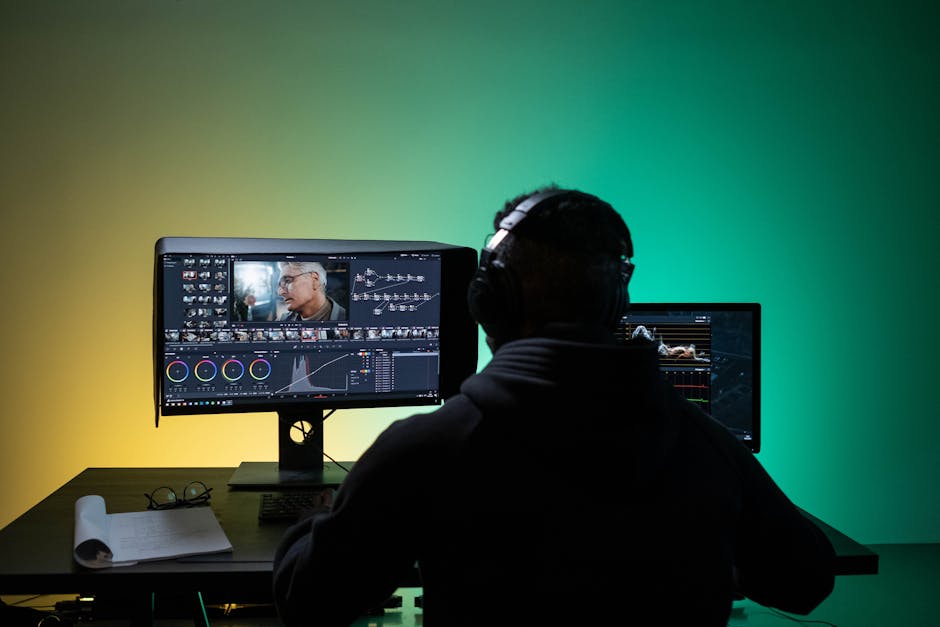Podcast Production
Welcome to the world of podcasting, where content is king and quality audio is essential. In today's fast-paced business environment, podcasts are increasingly becoming a popular medium for brands to engage with their audience, share expert insights, and establish thought leadership.
But, have you ever wondered what goes on behind the scenes to produce a successful podcast? In this blog post, we will take you on a step-by-step journey through the world of podcast production, demystifying the process while highlighting real-world, professional techniques that can help elevate your brand to the next level.
Identifying Your Target Audience

Photo by George Milton on Pexels
Identifying your target audience is a crucial step in the podcast production process. Before diving into content creation, it is essential to determine who you want to reach with your podcast. By understanding your ideal listener's interests, demographics, and pain points, you can tailor your content to resonate specifically with them.
To start, create a detailed listener persona - this should include information such as age, gender, occupation, income, education level, and even personal hobbies. This exercise will help you visualize and connect with your target audience on a deeper level.
Once you have a clear understanding of your target listener, explore online forums, social media groups, and other platforms where they spend their time. Engage in conversations and gather insights on their needs and preferences, helping you create a podcast that truly speaks to them.
Determining the Format and Style

Photo by cottonbro studio on Pexels
Determining the format and style of your podcast is a crucial step in the production process. Take time to consider the overall tone and vibe you want for your podcast, whether it's conversational, educational, or inspirational. This will create consistency and help you attract your target audience.
To identify the perfect format, think about the best way to present your content. For instance, if you want to share thought-provoking ideas, an interview-style podcast might be best. On the other hand, a narrative format might be ideal for stories and storytelling.
Your podcast's style should reflect your brand's professionalism. Consider crafting a polished intro and outro, engaging sound effects, and high-quality audio editing. Remember, the more professional your podcast sounds, the more likely your listeners will respect your brand and tune in for future episodes.
Creating a Content Plan and Episode Structure

Photo by Yan Krukau on Pexels
Creating a content plan is the first step in producing a successful podcast series. Begin by brainstorming topics that are relevant to your target audience and align with your company's expertise. Organize these ideas into a list, keeping in mind the desired frequency of your episodes and the overall direction of your podcast.
Next, develop an episode structure that will keep your listeners engaged and entertained. This includes deciding on the length of each episode, incorporating segments such as interviews or monologues, and planning the desired flow of conversation. Creating a consistent format will not only help streamline the production process but also establish familiarity and build a loyal audience. Remember, the key to a successful podcast lies in producing compelling, informative, and easily digestible content.
Selecting the Right Recording Equipment and Software

Photo by cottonbro studio on Pexels
Selecting the right recording equipment and software is a crucial step in the podcast production process. With so many options available, it's essential to thoroughly research and invest in high-quality tools that suit your needs.
First, determine the type of microphone that works best for your podcast format. There are two main types: dynamic and condenser microphones. Dynamic microphones handle loud noises better and require less power, while condenser microphones offer a more versatile and nuanced sound.
Next, identify the appropriate audio interface that connects your microphone to your computer. This device ensures clean, clear audio and is a significant component in achieving professional sound quality.
Lastly, choose reliable audio recording software to capture, edit, and export your podcast episodes. There's a wide variety of platforms, both free and paid, so it's essential to find one that aligns with your workflow and skill level.
By investing time and resources into selecting the right equipment and software, you set a solid foundation for a successful and professional-sounding podcast.
Setting Up Your Recording Environment
Setting up your recording environment is crucial to achieving a professional-sounding podcast.
First, choose a quiet space with minimal background noise and echo. This could be a home office, closet, or even a makeshift recording booth with soft materials to absorb sound.
Next, invest in high-quality recording equipment, including a microphone, audio interface, and headphones. Do your research and choose the best gear within your budget.
Once you have your space and equipment sorted, set the stage for a comfortable and engaging recording session. Have water, tissues, and notes easily accessible for both you and your guests.
Lastly, do a few test recordings to ensure levels and sound quality are up to standard. This will help you avoid editing headaches later on.
Recording, Editing, and Mastering Your Audio

Photo by Ron Lach on Pexels
Podcast production can be broken down into three main stages: recording, editing, and mastering your audio.
Recording is where you capture your content, usually featuring interviews, conversations, and narratives. Invest in a high-quality microphone and find a space with minimal background noise or echo. This not only provides a polished listening experience but easily engages your audience.
Editing involves trimming excess audio, adjusting levels, and enhancing your content. Utilize user-friendly editing software to eliminate awkward pauses, repetitive words or phrases, and other distractions. Strategically include sound effects and royalty-free music to enrich your podcast.
Mastering is the crucial final step of the process, ensuring a professional and cohesive sound. Adjust the volume and equalization to ensure consistency while removing any remaining background hum or noise.
By cultivating exceptional recording, editing, and mastering practices, your podcast will be primed for success. Remember, meticulous attention to audio quality can transform a good podcast into a great one.
Creating Show Notes, Artwork, and Promotional Materials

Photo by Karolina Grabowska on Pexels
Creating show notes, artwork, and promotional materials for your podcast is essential in ensuring its success and reaching a wider audience.
Start by drafting comprehensive show notes that provide an overview of each episode. This should include key points, timestamps, and any relevant links or references mentioned during the conversation. Not only will this make it easier for your listeners to follow along, but it's also beneficial for search engine optimization (SEO).
Next, design eye-catching artwork for your podcast. This will be the visual representation of your show, so ensure it aligns with your branding and captures the essence of your content to attract potential listeners.
Lastly, create promotional materials to spread the word about your podcast. This could include social media posts, blog entries, email newsletters, or even short video clips. Highlight key moments or topics discussed in each episode to entice your target audience and encourage them to tune in.
Remember, a professionally designed podcast with effective promotional materials is crucial in making your show stand out in a competitive market.
Uploading and Distributing Your Podcast to Platforms

Photo by fauxels on Pexels
Uploading and distributing your podcast may seem like a daunting task, but in reality, it's a straightforward process. With a few simple steps, you can easily reach a wider audience on popular podcast platforms.
First, select a podcast hosting platform that suits your needs. Some popular options include Libsyn, Podbean, and Anchor. These platforms store and manage your episodes, making it simple for podcast directories to access your content.
Once you've chosen your platform, follow their instructions to upload your episodes. You'll need to provide information about your podcast, like the title, description, and cover art. This helps listeners find and understand your show.
Finally, submit your podcast to directories like Apple Podcasts, Spotify, and Google Podcasts. They usually require an RSS feed link, which your hosting platform should provide. After approval, your podcast will be available for listeners to enjoy and share with their friends! Make sure to regularly upload new episodes to keep your audience engaged.


